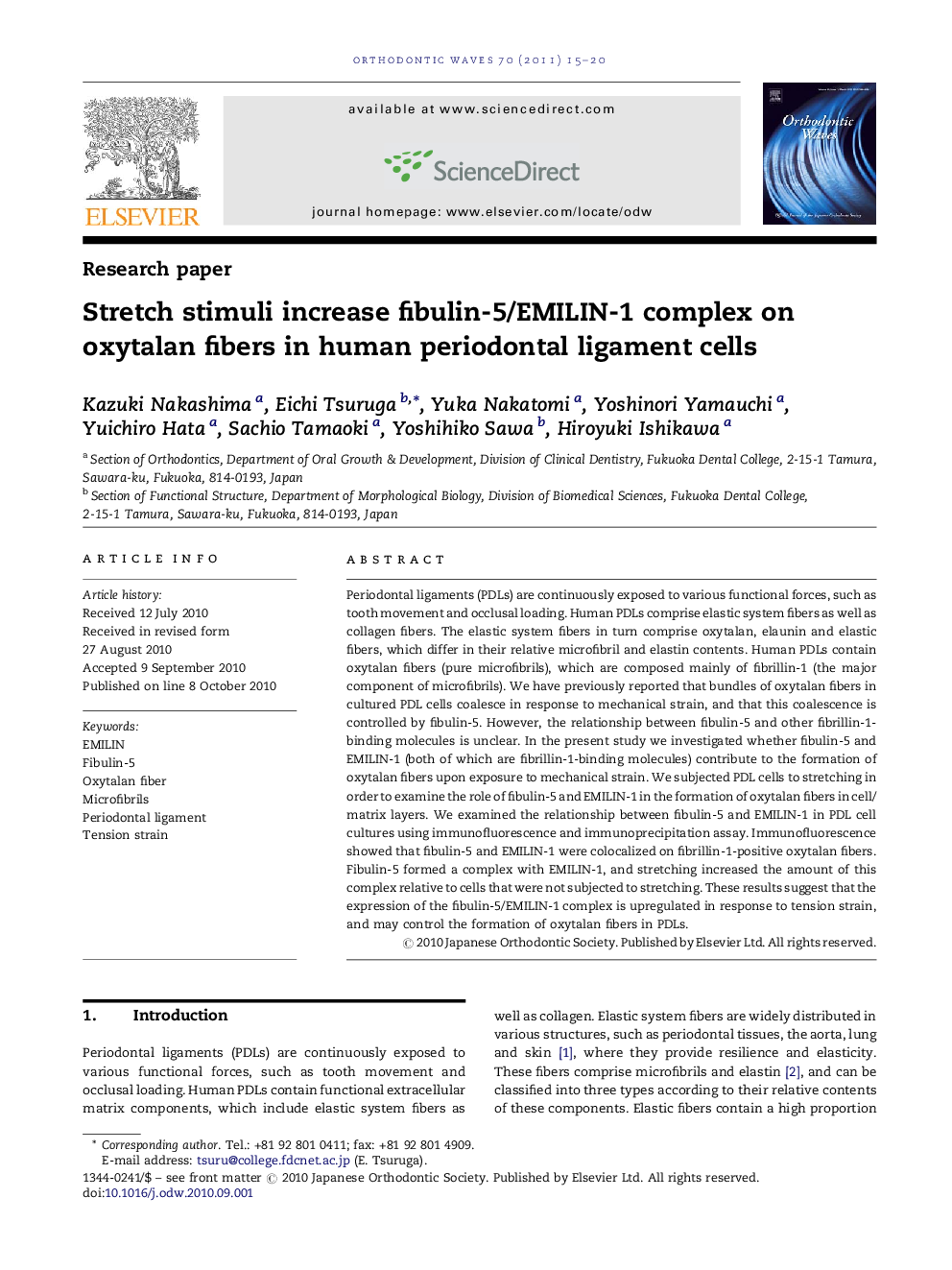| Article ID | Journal | Published Year | Pages | File Type |
|---|---|---|---|---|
| 3170580 | Orthodontic Waves | 2011 | 6 Pages |
Periodontal ligaments (PDLs) are continuously exposed to various functional forces, such as tooth movement and occlusal loading. Human PDLs comprise elastic system fibers as well as collagen fibers. The elastic system fibers in turn comprise oxytalan, elaunin and elastic fibers, which differ in their relative microfibril and elastin contents. Human PDLs contain oxytalan fibers (pure microfibrils), which are composed mainly of fibrillin-1 (the major component of microfibrils). We have previously reported that bundles of oxytalan fibers in cultured PDL cells coalesce in response to mechanical strain, and that this coalescence is controlled by fibulin-5. However, the relationship between fibulin-5 and other fibrillin-1-binding molecules is unclear. In the present study we investigated whether fibulin-5 and EMILIN-1 (both of which are fibrillin-1-binding molecules) contribute to the formation of oxytalan fibers upon exposure to mechanical strain. We subjected PDL cells to stretching in order to examine the role of fibulin-5 and EMILIN-1 in the formation of oxytalan fibers in cell/matrix layers. We examined the relationship between fibulin-5 and EMILIN-1 in PDL cell cultures using immunofluorescence and immunoprecipitation assay. Immunofluorescence showed that fibulin-5 and EMILIN-1 were colocalized on fibrillin-1-positive oxytalan fibers. Fibulin-5 formed a complex with EMILIN-1, and stretching increased the amount of this complex relative to cells that were not subjected to stretching. These results suggest that the expression of the fibulin-5/EMILIN-1 complex is upregulated in response to tension strain, and may control the formation of oxytalan fibers in PDLs.
